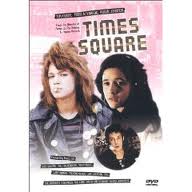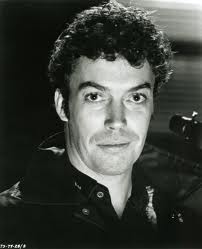"China is here Mr. Burton" - Uncle Chu
My best friend in grade school was a Chinese-American kid named Nelson. His parents had immigrated to the states from China before Nelson was born, and his dad had been successful enough to buy a home in an upper-middle class northern California suburb. From the outside, Nelson's house looked like everyone else's in the neighborhood - boring, Spanish style architecture covered in beige stucco with a well-appointed lawn in front. The inside of the house was a different matter. Once past the foyer, the first thing you noticed was the subtle but rich colors of black, red, gold and white. The colors emanated from a tasteful blending of framed dragon prints on the walls, porcelain doll figures on the bookshelves, and the lacquered wood and glass coffee and end table furnishings topped with various exotic ornaments. It was almost like stepping into a museum of another culture. My parent's house had the ubiquitous orange and avocado green interior motif of mid-70's Brady Bunch America. Nelson's bedroom was upstairs at his house, and unlike the ground floor, looked like any kid's from California in that era - a poster of Reggie on the wall, a lava lamp on the nightstand, and Universal monster glow-in-the-dark models on the the headboard. Somewhere along the staircase to Nelson's second story bedroom, the culture shifted from primarily Chinese to primarily American. I never thought about the dichotomy between the generations then, Nelson's parents came from someplace else, and they had just brought a little of that culture with them, it was as simple as that to me. But, thinking back, I wonder how Nelson's parents felt about this generational cultural shift. They certainly didn't discourage there son from becoming very Americanized, but how much did they want him to hold on to the old culture? And how did they want their son perceived in the new culture - as a Chinese-American or just an American?
Questions of cultural identity are intelligently and subtly addressed in Wayne Wang's 1982 mystery Chan is Missing.
Synopsis: A cabbie and his nephew search for their missing investment partner in San Francisco's Chinatown.
Chan is Missing is a cleverly written indie, art house, mystery with two likable leads played by Wood Moy and Marc Hayashi. Moy plays Jo, the patient and persistent uncle who has a wry sense of humor and is knowledgeable of the old world culture. Moy also provides the film's narration which actually proves useful, and not the redundant distraction that most film narration tends to be. Hayashi plays Jo's nephew Steve and often brings a welcome playfulness to his character and the story. The film works best when both these characters are on screen with each other or a third party. The two leads are very relaxed and natural in each others presence and often seem to be doing some improvisational riffing. Thematically, the film is about cultural identity and its perception by others in and out of the culture. This is easily the film's strongest suit. Co-writer/director Wang delivers his message very effectively through the story, characters, narration and some interesting musical choices like a Chinese version of Bill Haley's Rock Around the Clock.
On the downside, the film is shot bare bones in B & W 16mm which is kind of a shame when you're shooting in one of the most beautiful cities in the world, but Wang was financed off a grant and seemed to do as much as he could with what he had. The pacing is slow with some scenes seeming to start a little early and holding on a beat too long. I also wanted to see a little bit more of Chinatown, but this would have only exacerbated the pacing problem.The musical choices were inspired, but sparsely thrown onto the soundtrack. For an early effort, this was a solid film with something to say and likeable characters. I just wish there had been a little more material and music.
Final score:
7.5/10
Very Cool - Available on Netflix Instant
Not so much - $26.99 list price on Amazon
WTF? - Henry the cook simultaneously drinking milk and smoking cigarettes while cooking.




















